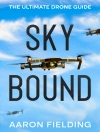The post-flight reports from each of the six Apollo missions regarding the success of a one-time attempt to land on the Moon confirmed in the opinion of each of the Commanders (pilots) that the LLRV was absolutely mandatory to train a human pilot to land a vehicle (the LM) of the Apollo era successfully on the lunar surface.
Wayne Ottinger and his colleagues at FRC had created a marvelous flying machine called the Lunar Landing Training Vehicle, a unique machine that gave us the confidence and capabilities to ensure the Apollo Lunar Module never failed in landing at six different and unknown locations on the Moon. This remarkable book tells the full story of how they did it—Apollo will be ever thankful for their inspiration and innovation, a true milestone in the history of human flight.
David R. Scott
Commander, Apollo 15
March 3, 2023
Over de auteur
Clyde Wayne Ottinger, born October 22, 1933, in Phoenix, AZ, has lived through phenomenal advances in aviation and space travel starting in 1903 and only five decades later, achieving human exploration beyond earth. His early interest in flying in his high school flying club just after WWII and training as a mechanical engineer prepared him well to begin his career as a flight test engineer on the first lightweight supersonic jet engine for many Century Series supersonic fighters and a Mach 2 bomber. In early 1960, he joined NASA as a rocket flight test engineer on the hypersonic X-15 rocket plane, and in 1963, he was promoted to the Lunar Landing Research Vehicle project engineer. In mid-1966, he joined Bell Aerosytems as the Technical Director for the Lunar Landing Training Vehicle. He worked with test pilots, Apollo astronauts (Neil Armstrong and six others, two Airforce Generals, two Navy Admirals, and Bell Aerosystems’s Vice President General Walter Dornberger (former Commander of the Army portion Nazi Germany’s missile installation at Peenemunde). He witnessed President Eisenhower’s attempt in his second week at NASA’s Flight Research Center to claim the U-2 Francis Gary Powers was piloting on a NASA civilian atmospheric research mission when it was shot down on May 1, 1960. NASA’s Chief Test Pilot, Joe Walker, had to taxi a U-2 with NASA painted overnight on its tail for the press soon after he arrived for work. Khrushchev confronted Ike with spy camera from the crash, had Powers in prison who he met after his prisoner exchange.
His key roles in Apollo, credited for developing the critical research and training for 12 astronauts safely landing and returning from the moon, led to senior consulting and activities throughout the post-Apollo decades into the first two decades of the 21st Century.












